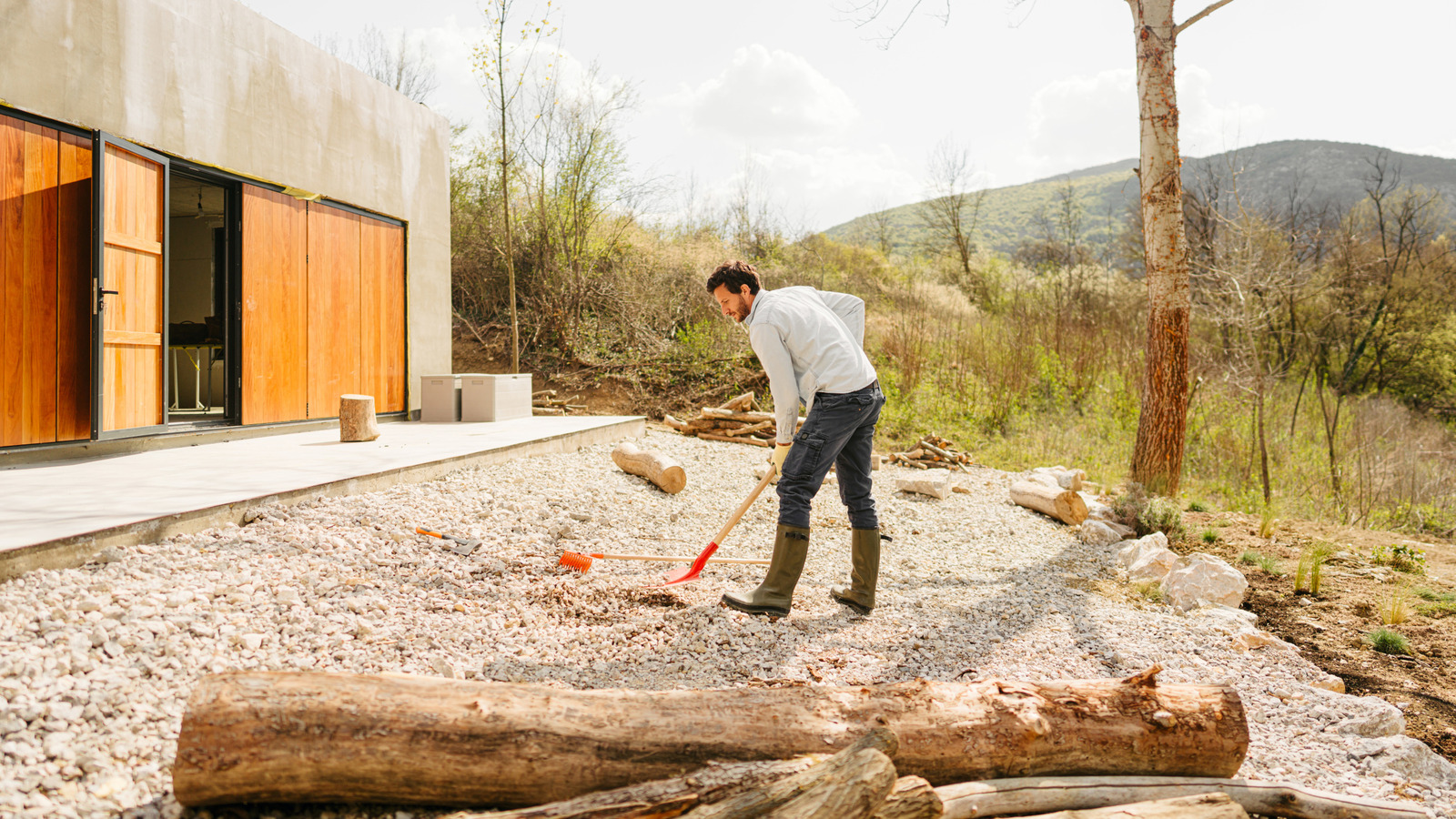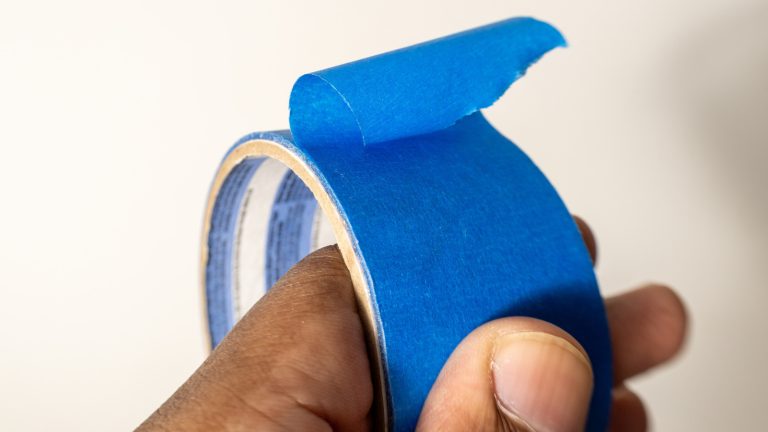
Maintaining a lush, green lawn requires regular upkeep. This includes mowing and weed control, but it also demands a significant amount of water. Generally, lawns need about 1 inch of water weekly to stay healthy. For a 1,000-square-foot lawn, that translates to over 600 gallons of water per week, totaling more than 30,000 gallons annually. Due to this high water usage, many people, especially those in dry areas, are opting for low-maintenance gravel gardens. These gardens help reduce water consumption and minimize yard work.
Although gravel yards might not offer the lushness of grass, they can certainly be attractive. There are numerous ways to enhance your sustainable outdoor space, such as adding raised beds for gardening or creating artistic patterns with gravel. Transitioning from grass might seem daunting, especially from a visual perspective, but with these ideas, you’ll wonder why you didn’t switch sooner.
Add Natural Seating
Biophilic design is currently very popular, and nothing honors nature more than emulating natural landscapes. If you want a comfortable addition to your gravel garden that complements your design, consider using natural stone for seating instead of conventional benches or patio sets. For a truly natural look, opt for large, rounded stones. However, long, flat stones resembling a traditional bench might be more comfortable for casual seating and lounging.
Create a Relaxing Enclave
If your outdoor space is small or you’re on a budget — since gravel can be pricey — consider creating a cozy enclave in a quiet corner of your yard. Define the area with pavers, add plants in containers or a row of shrubs around the edges, and use your fence for added privacy if possible. Complete the space with comfortable chairs or a bistro set to create a perfect spot for morning coffee, reading, or sunbathing.
Test Out Your Green Thumb
Forgoing grass doesn’t mean your garden has to lack plant life. If you want to make your outdoor space functional for growing, consider adding raised beds to your gravel garden. The gravel around and under the beds offers benefits like promoting proper drainage, deterring pests, and making paths more accessible for harvesting and maintenance, particularly in wet weather.
Get Creative with Your Placement
Having trouble choosing the right gravel color for your garden? Why not use multiple colors? A gravel garden offers design flexibility, so get creative by arranging paths in unique, wavy patterns or combining different gravel colors for a bold look. To make a path or pattern stand out, choose gravel colors with strong contrast for a sharp appearance.
Keep the Design Sleek and Modern
If you prefer a simpler look, draw inspiration from Japanese zen gardens. These spaces are designed to promote relaxation and meditation, so their decorative elements are typically simple and minimal. Apply this approach to your space by using a monochromatic color scheme, clean lines, and minimal decorations. To complete the zen garden experience, regularly rake your gravel into smooth, wave-like patterns.
Add Pops of Color with Native Plants
Switching from a traditional grass lawn to a gravel garden supports sustainable landscaping. To further benefit the environment, consider adding native plants. While an all-gravel garden reduces water usage, it doesn’t support wildlife. Native plants are low-maintenance, attract pollinators like butterflies and bees, and add a lovely pop of color to your space.
Show Off Some Succulents
Gravel lawns are popular in arid regions with frequent droughts or water restrictions. If this sounds like your area, break up your gravel garden with succulents and other drought-tolerant plants. Succulents are mostly self-sustaining; just plant them and watch them thrive. With proper sunlight and minimal water, you can enjoy a flourishing, climate-resistant garden in even the driest conditions.
Transform an Awkward Space
Even if you don’t fully embrace the gravel garden concept, use it to solve issues in areas where maintaining grass is difficult. Areas with constant shade, such as between buildings or alongside your home, can benefit from gravel. Replace struggling grass with gravel, add seating, and introduce shade-loving plants for color. This once-unused space might become your favorite hangout.
Supplement with Shade
While gravel gardens offer many benefits in hot, arid climates, they do have a downside. Gravel retains more heat than grass, making outdoor spaces uncomfortably hot on sunny days. To combat this, prioritize shade. A covered patio, pergola, or drought-resistant trees and shrubs can make your yard more comfortable, especially during the hottest days of summer.
Play Around with Stepping Stones
Whether you have gravel paths or a yard of crushed rock, enhance it with stepping stones. Unlike pavers, stepping stones are easy to install; just clear away the gravel and lay them on your compacted base. Choose from various materials, colors, shapes, and sizes. Keep a natural look with real stone in organic shapes, or opt for a modern style with concrete stepping stones in circles or squares.
Use Gravel Grids to Reduce Maintenance
Gravel gardens require less maintenance than grass but can still develop issues. Regular raking prevents rutting and potholes. Installing a grid can reduce maintenance, especially in high-traffic areas. Options like the Vevor Ground Grid are made of thin plastic, undetectable under the gravel surface. Alternatively, choose concrete grid-shaped pavers for a visible pattern.
Add Pops of Color with Mulch
Gravel can be used as mulch in plant beds, which makes sense if you already have a gravel yard. However, mixing and matching is also an option. Gravel is typically neutral in color, so add a pop of color by accenting garden beds with bark mulch. It retains moisture, prevents weeds, and better regulates temperature.






